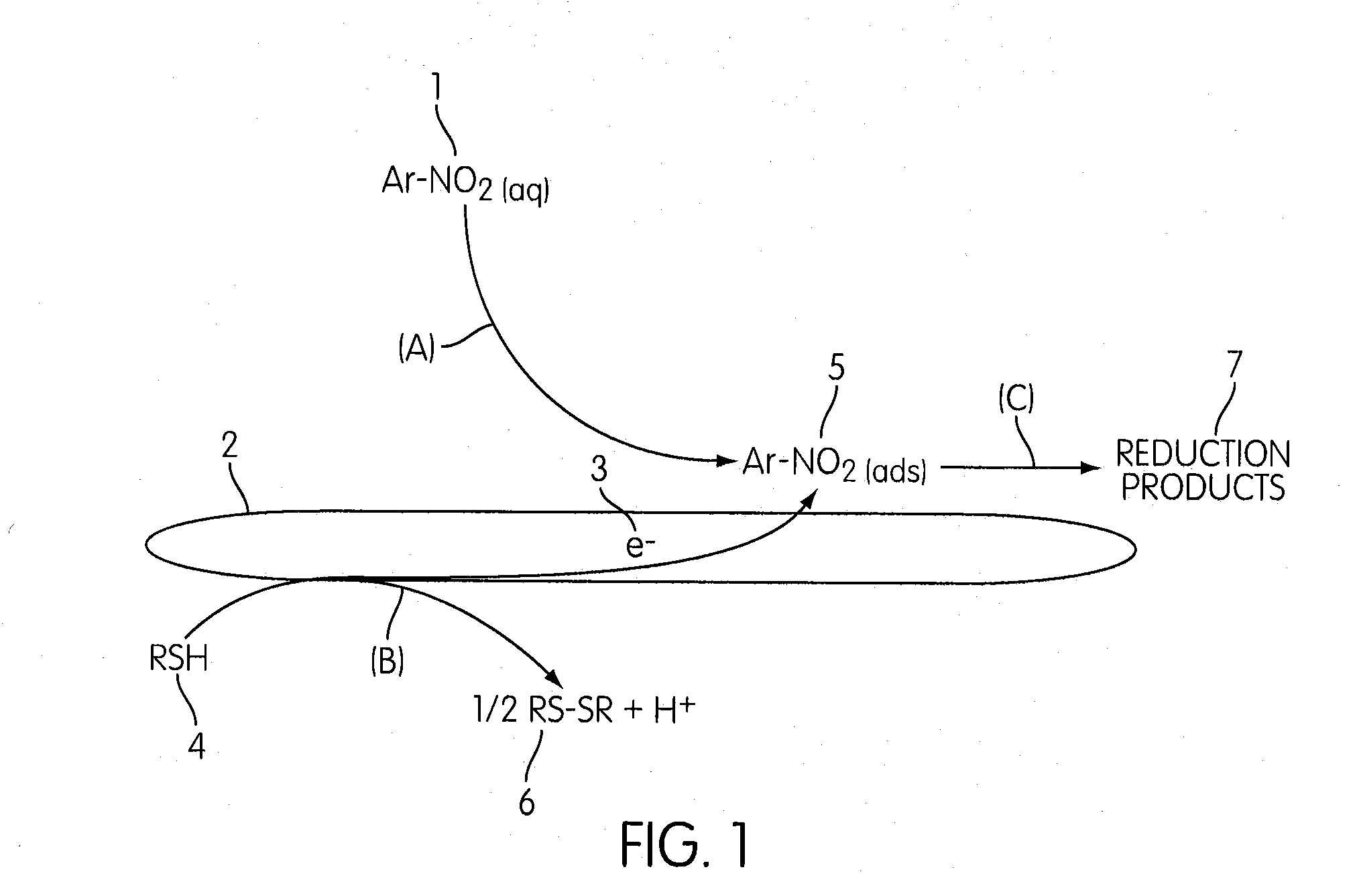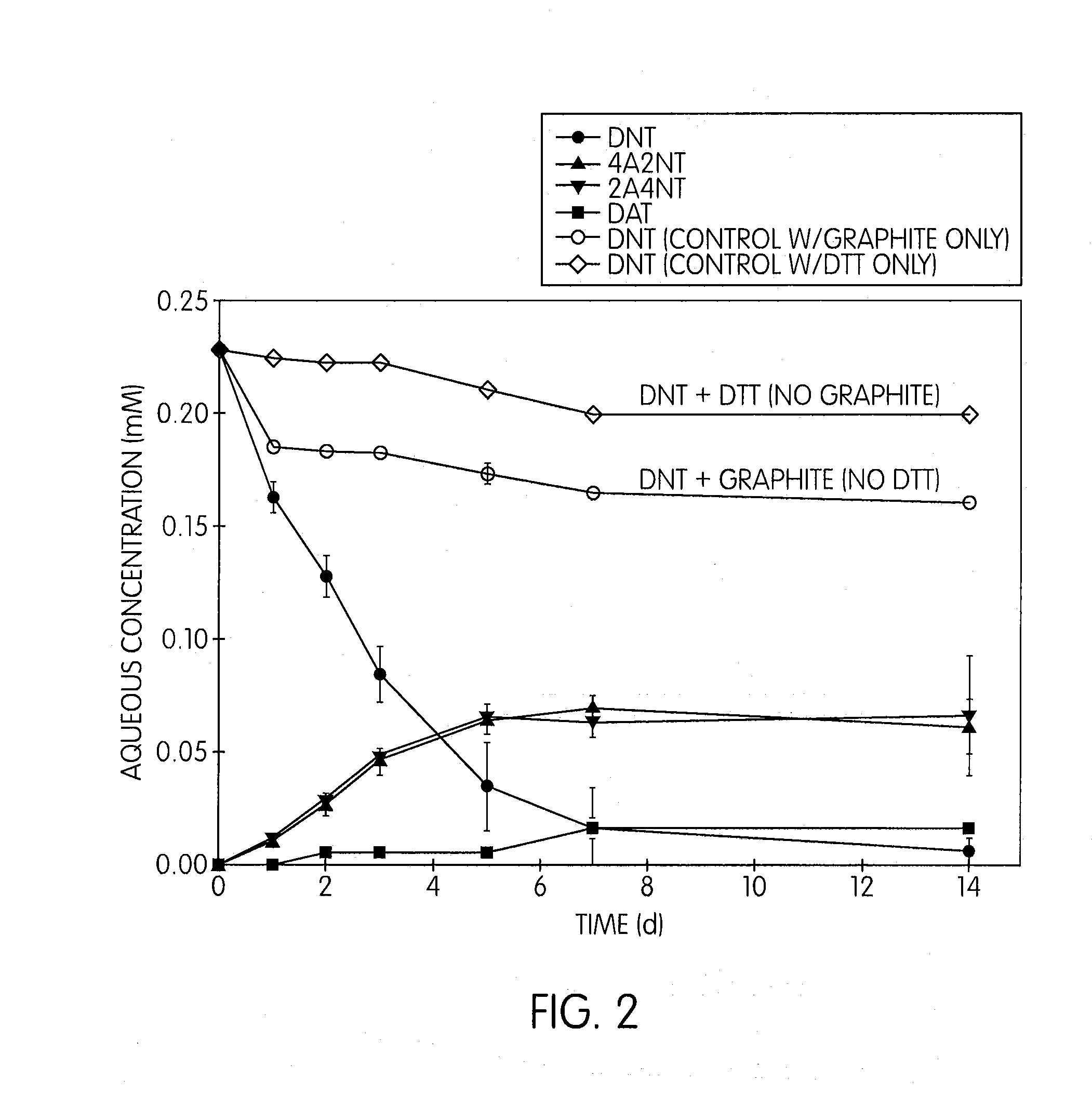Method for remediating nitro and/or halogenated compound-contaminated soil, sediment or water using graphitic carbon as a catalytic sorbent
a technology of graphitic carbon and nitro, which is applied in the direction of contaminated groundwater/leachate treatment, water/sewage treatment by ion exchange, and separation processes, etc. it can solve the problems of difficult environmental problems, high excavation and capping costs, and few viable technologies currently available, so as to achieve more water soluble and less toxic compounds, the effect of being more readily biodegradable or potentially less toxi
- Summary
- Abstract
- Description
- Claims
- Application Information
AI Technical Summary
Benefits of technology
Problems solved by technology
Method used
Image
Examples
examples
[0023]To demonstrate the efficacy of the invention, an experiment was conducted using 2,4-dinitrotoluene (DNT) as a test contaminant compound and graphite particles (99.9%, 20-84 mesh, Alfa Aesar) as the graphitic carbon component. The specific surface area of the graphite was determined by the BET adsorption method with nitrogen to be 1.5 m2 / g. Dithiothreitol (DTT, 98%, Sigma-Aldrich) was used as a model reducing agent.
[0024]Duplicate 250 mL amber glass bottles were set up in an anaerobic glove box (N2 / H2, 95 / 5), each containing 200 mL of DNT solution at pH 7.4 and 10 g of graphite particles. One bottle contained reducing agent, while the other did not. Aqueous samples were collected at different elapsed times and filtered immediately for liquid chromatographic (LC) analysis. The concentrations of DNT and its reduction product, 2,4-diamino-toluene (DAT), and two intermediates, 2-amino-4-nitro-toluene (2A4NT) and 4-amino-2-nitro-toluene (4A2NT), were determined using the analytical ...
PUM
 Login to View More
Login to View More Abstract
Description
Claims
Application Information
 Login to View More
Login to View More - R&D
- Intellectual Property
- Life Sciences
- Materials
- Tech Scout
- Unparalleled Data Quality
- Higher Quality Content
- 60% Fewer Hallucinations
Browse by: Latest US Patents, China's latest patents, Technical Efficacy Thesaurus, Application Domain, Technology Topic, Popular Technical Reports.
© 2025 PatSnap. All rights reserved.Legal|Privacy policy|Modern Slavery Act Transparency Statement|Sitemap|About US| Contact US: help@patsnap.com


